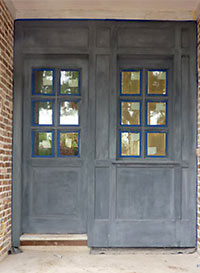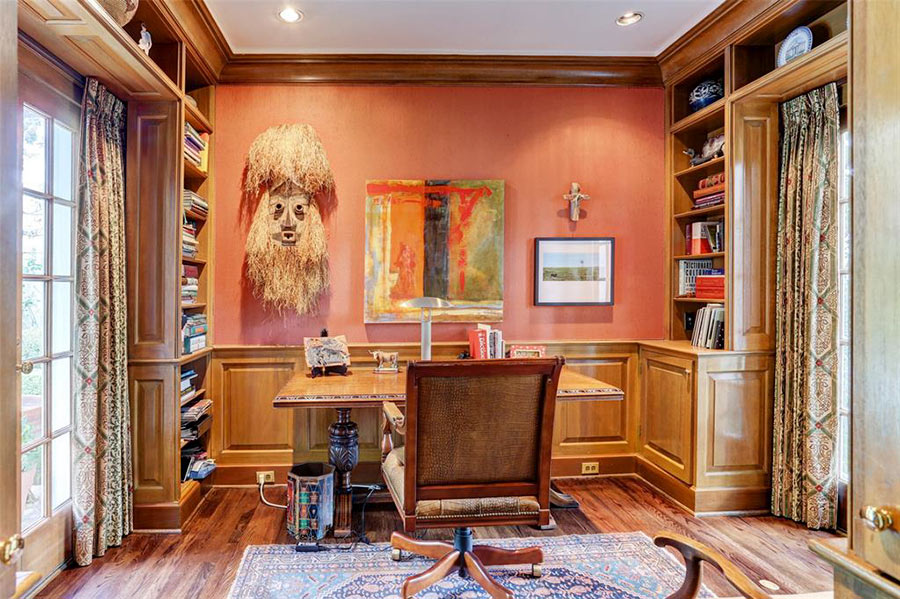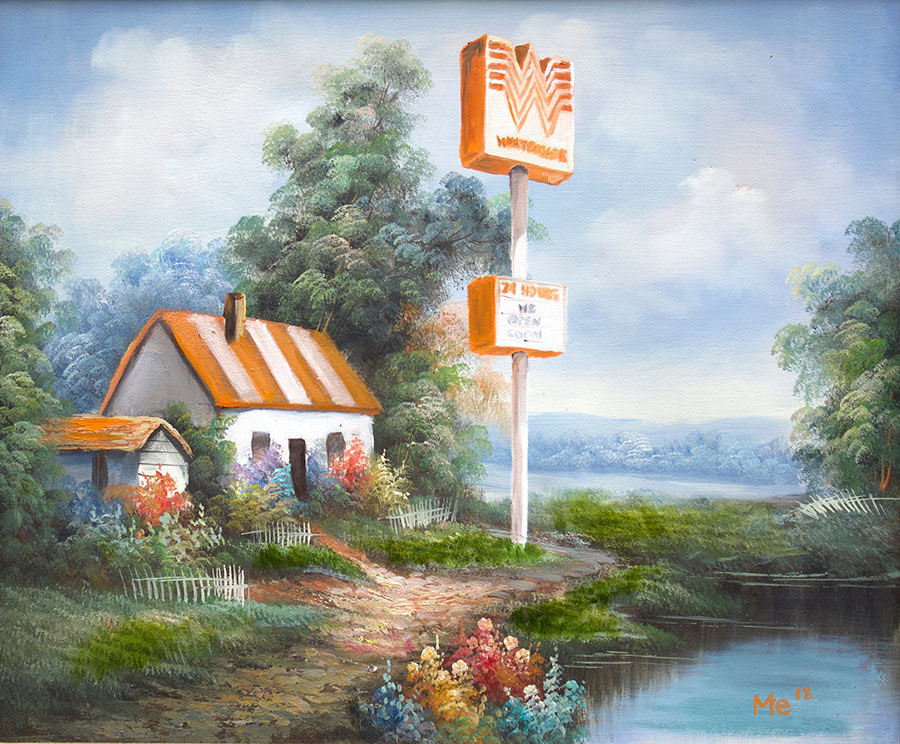BRUSHING IN THE OLD EUROPE  Art-school graduate, grinder, and faux finisher Michael Bise pays the bills: “Last week for instance, I found myself in front of an eight-foot tall, three-panel window (of which there were 18 total) brushing blue milk-paint (a sturdy, old-master-y kind of paint made from lime—not the kind used to flavor Mexican beers, but the kind used to dissolve dead hookers—and cottage cheese, the delicious curdled-milk treat), which requires three or four applications of slightly different blues, each layer requiring sanding before the subsequent application, with a final application which necessitates a vigorous once-over with steel wool, leaving your arms and face covered in a fine layer of blue lime and steel shavings and your nostrils crusty with black boogers.
This process yields the rough equivalent of a tastefully aged barn door, on a barn next to a cottage in the French countryside, if the barn were to have a Bentley parked in it with the sounds of Aryan children splashing around in a nearby lap pool echoing off its rough timbers. The other mainstay of fauxing consists of creating an approximation of Venetian plaster on top of good old Texas drywall. This is about as labor-intensive as hanging and floating the drywall in the first place. The “Venetian plaster†is made out of standard drywall mud from Home Depot mixed with paint tint and a few secret ingredients to make it smoother and shinier. The key of course is in the application. My partner Joe and I have dubbed this well-guarded application secret “punch, punch, drag.†This is the same application process used in every Mexican restaurant in Texas, but, as in all things, the devil is in the subtlety of the details. Some clients prefer their plaster to approximate the walls of Castle Dracula while others, perhaps having read Thomas Mann’s Death in Venice (or maybe not), seek a subtler version of decay. Ultimately, whether wood, plaster, concrete, or beam, the most essential aspect of my job is making new stuff look old.
It’s an amazingly stupid job when you think about it (and you don’t have to think very hard to realize how stupid it is). . . .” [Glasstire] Photo: Michael Bise
Art-school graduate, grinder, and faux finisher Michael Bise pays the bills: “Last week for instance, I found myself in front of an eight-foot tall, three-panel window (of which there were 18 total) brushing blue milk-paint (a sturdy, old-master-y kind of paint made from lime—not the kind used to flavor Mexican beers, but the kind used to dissolve dead hookers—and cottage cheese, the delicious curdled-milk treat), which requires three or four applications of slightly different blues, each layer requiring sanding before the subsequent application, with a final application which necessitates a vigorous once-over with steel wool, leaving your arms and face covered in a fine layer of blue lime and steel shavings and your nostrils crusty with black boogers.
This process yields the rough equivalent of a tastefully aged barn door, on a barn next to a cottage in the French countryside, if the barn were to have a Bentley parked in it with the sounds of Aryan children splashing around in a nearby lap pool echoing off its rough timbers. The other mainstay of fauxing consists of creating an approximation of Venetian plaster on top of good old Texas drywall. This is about as labor-intensive as hanging and floating the drywall in the first place. The “Venetian plaster†is made out of standard drywall mud from Home Depot mixed with paint tint and a few secret ingredients to make it smoother and shinier. The key of course is in the application. My partner Joe and I have dubbed this well-guarded application secret “punch, punch, drag.†This is the same application process used in every Mexican restaurant in Texas, but, as in all things, the devil is in the subtlety of the details. Some clients prefer their plaster to approximate the walls of Castle Dracula while others, perhaps having read Thomas Mann’s Death in Venice (or maybe not), seek a subtler version of decay. Ultimately, whether wood, plaster, concrete, or beam, the most essential aspect of my job is making new stuff look old.
It’s an amazingly stupid job when you think about it (and you don’t have to think very hard to realize how stupid it is). . . .” [Glasstire] Photo: Michael Bise





So that’s how you dispose of dead hooker bods! Wish I had known this in college.
If they’re willing to pay you, then it’s not so stupid.